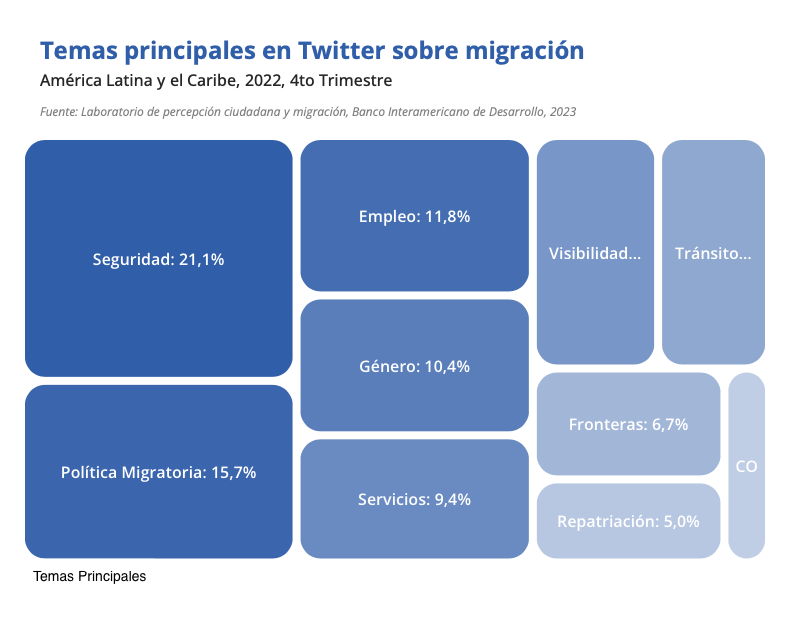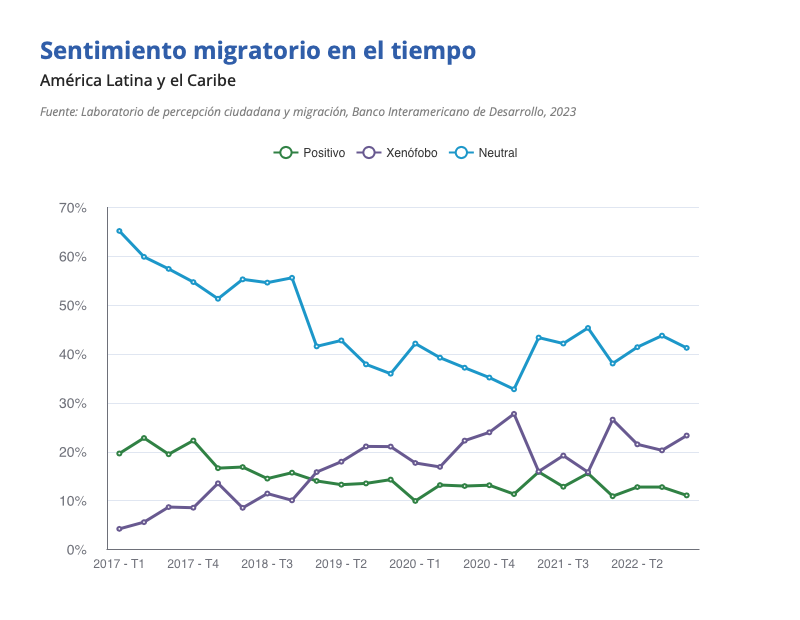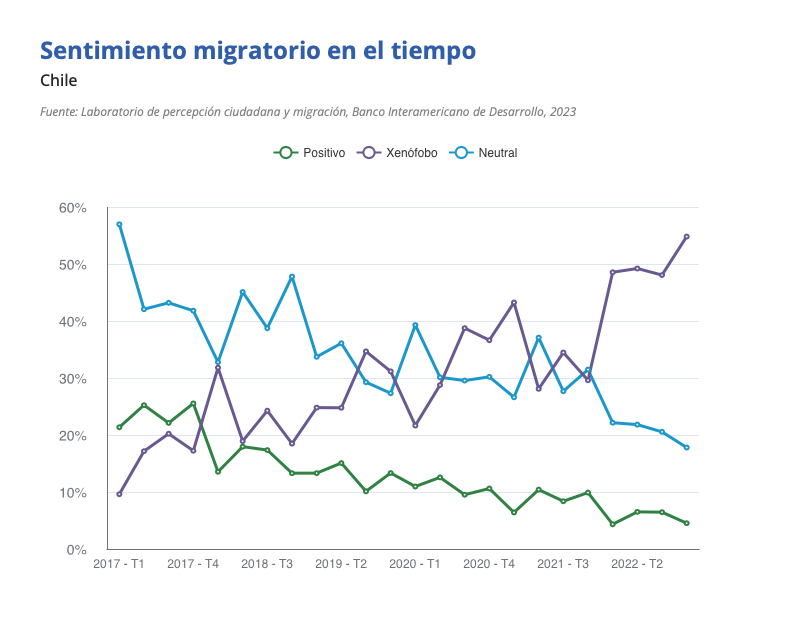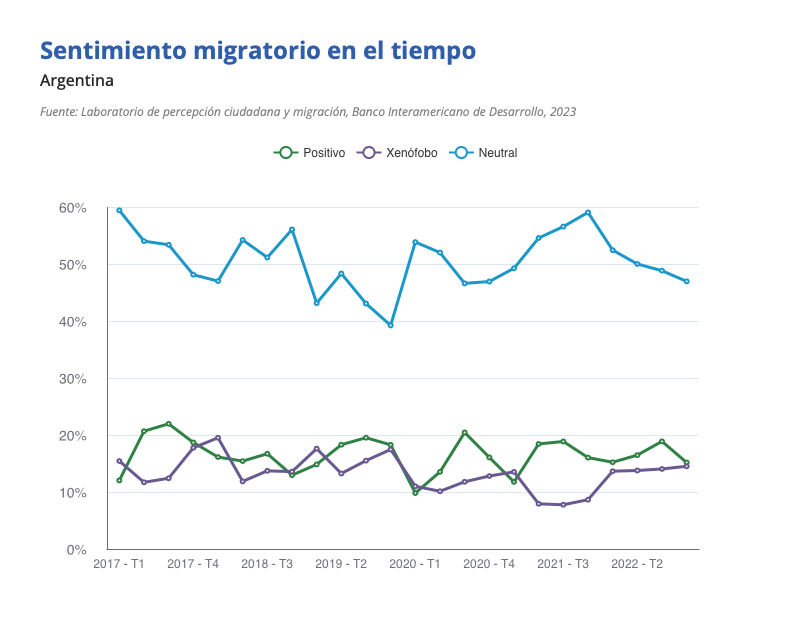- March 24, 2023
- Natalia Araya

How is migration perceived in Latin America?
Many ways of living and relating between people from different countries have been profoundly transformed since large migratory flows began to move in the Americas. This has impacted locals’ perception of migration in their areas of residence. Let’s get to know different ways in which migration is perceived in Latin American and Caribbean countries.
In 2023, the Inter-American Development Bank Laboratory (IDB Lab) published a major study to demonstrate the perception of migration in Latin America and the Caribbean in different aspects of the migration phenomenon. that this perception is deteriorating.
General Sentiment on Migration in Latin America and the Caribbean
IDB Lab’s analysis is that there is a generalized tendency in the region to reject migration and migrants. A significant percentage of native people do not feel comfortable having immigrants as their neighbors or receiving them in their country. In fact, they distrust them.
In this sense, it is not surprising that the subregions that show a more marked tendency to reject migration are those that have received massive flows of migrants in a short period of time. For example, the Andean region following the increasing migration from Venezuela.

What is the migration conversation on social networks?
The study found 140,000 tweets that talk about the immigration issue, relating it to different areas: gender, labor, security, legislation, among many others. The main topics with which migration is associated on Twitter are security, migration policy and employment.


Positive, neutral and negative sentiment
The way people think about migration in Latin America and the Caribbean has changed quite a bit.
From 2017 to 2022 neutral sentiment took a big drop from 65.2% at the beginning of 2017 to 41.3% at the end of last year. At the same time, positive sentiment dropped five percentage points and negative or xenophobic sentiment increased exponentially from 4.2% to 23.3%.
Not only have there been people commenting on negative sentiments related to migration, more xenophobic accounts have also been created: from 1.4% in 2017 to 7.2% in 2022.
That the biggest drop is neutral sentiment and the biggest increase is negative or xenophobic sentiment reminds us that we have ahead of us the great challenge of changing the narrative..
How is the perception of migration in Chile and Argentina?
In Chile, there was a
peak
of tweets about migration between the end of 2021 and the beginning of 2022, with more than 79 thousand. While in Argentina, the largest
peak
occurred at the end of 2018 with 21 thousand.
Migration sentiment in both countries has changed over the last five years, but in Chile it has deteriorated much more: the neutral perception plummeted by 40 percentage points, from 57% to 17%. At the same time, positive sentiment fell from 21% to 4.6%, its lowest point so far.
The only number on the rise is negative or xenophobic migratory sentiment: it went from 9.7% at the beginning of the study period to 54.9% at the end of 2022.

Argentina’s numbers are less steep than Chile’s: neutral sentiment has gone through ups and downs, but overall it dropped from 60% to 54%.
Positive and negative or xenophobic sentiment compete with each other, going through stages where one dominates over the other. At the end of 2022, positive and negative sentiment were almost tied, with 15.3% for the former and 14.6% for the latter.

To address these results, we must take action and communicate a fundamental idea: migrant communities contribute to the development and well-being of their host countries and communities.
According to data from the International Monetary Fund According to data from the International Monetary Fund, Venezuelan migration alone has contributed to the average increase in the GDP of the main receiving countries, from 0.1% to 0.25%, over the last five years.
For this reason, it is essential to to work on the process of socio-economic integration of migrants, since a good public policy approach prevents violence and generates welfare for migrant families and host communities.A good public policy approach prevents violence and generates well-being for migrant families and host communities.


